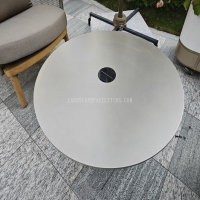Welcome to the website for landscape facilities products and knowledge.
How do landscape chairs made from composite materials compare to traditional options in terms of performance and cost?
When choosing outdoor furniture, landscape chairs made from composite materials are increasingly popular, but how do they stack up against traditional options like wood or metal? Here’s a detailed comparison in terms of performance and cost.
Performance Comparison
Composite landscape chairs excel in durability and weather resistance. Unlike wood, they won’t rot, warp, or splinter, and they resist fading from UV exposure. Metal chairs, while sturdy, are prone to rust and require frequent maintenance. Composite materials also offer better weight-to-strength ratios, making them lighter yet equally sturdy.
Traditional wooden chairs provide a classic aesthetic but demand regular sealing or staining to maintain their appearance. Metal chairs, though robust, can become uncomfortably hot or cold depending on the weather. Composite chairs, however, remain temperature-neutral and require minimal upkeep.
Cost Analysis
Initially, composite chairs may seem more expensive than basic wooden or metal options. However, their long-term cost-effectiveness shines due to lower maintenance expenses. Wooden chairs need recurring treatments, while metal chairs may require repainting or rust removal. Composite chairs, on the other hand, only need occasional cleaning with soap and water.
Over time, the reduced maintenance and longer lifespan of composite chairs often make them a smarter investment. While traditional chairs might cost less upfront, their hidden expenses add up, making composites a cost-efficient choice for sustainable outdoor furniture.
In summary, composite landscape chairs outperform traditional options in durability, comfort, and low maintenance, offering better value over time despite a higher initial price.
Related search:

Recommendation
Outdoor stainless steel table with solar-powered ambient lighting feature - excellent design.